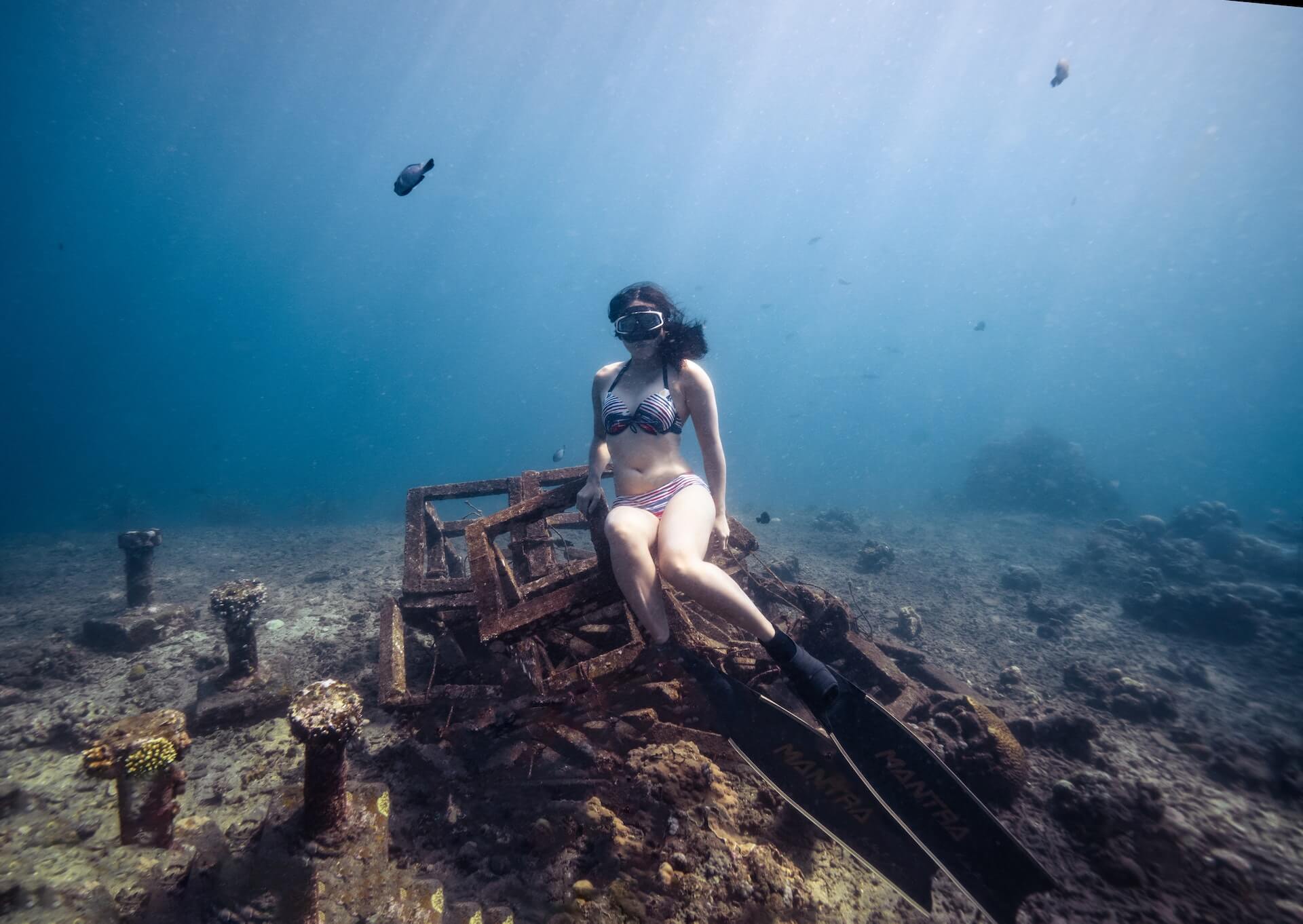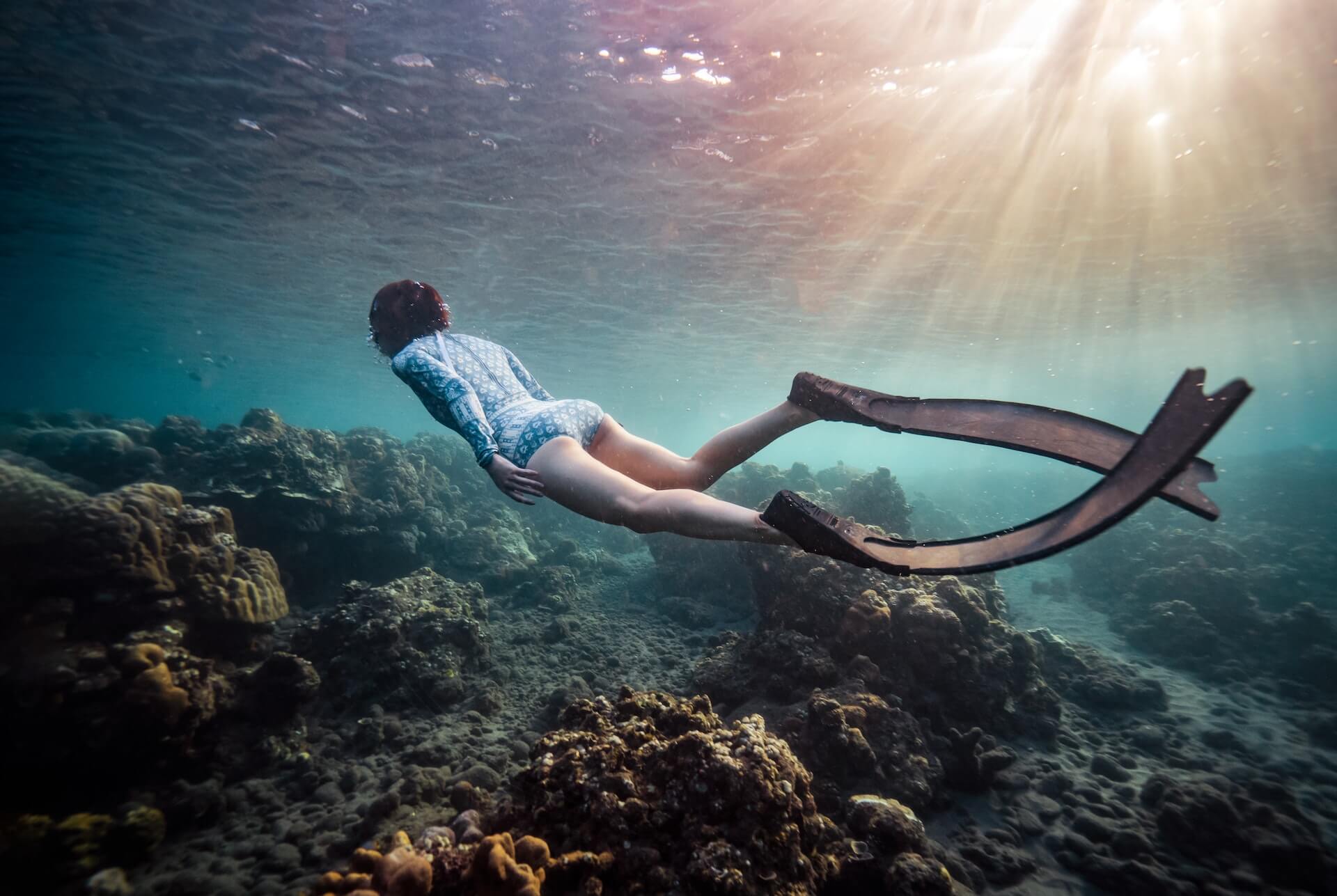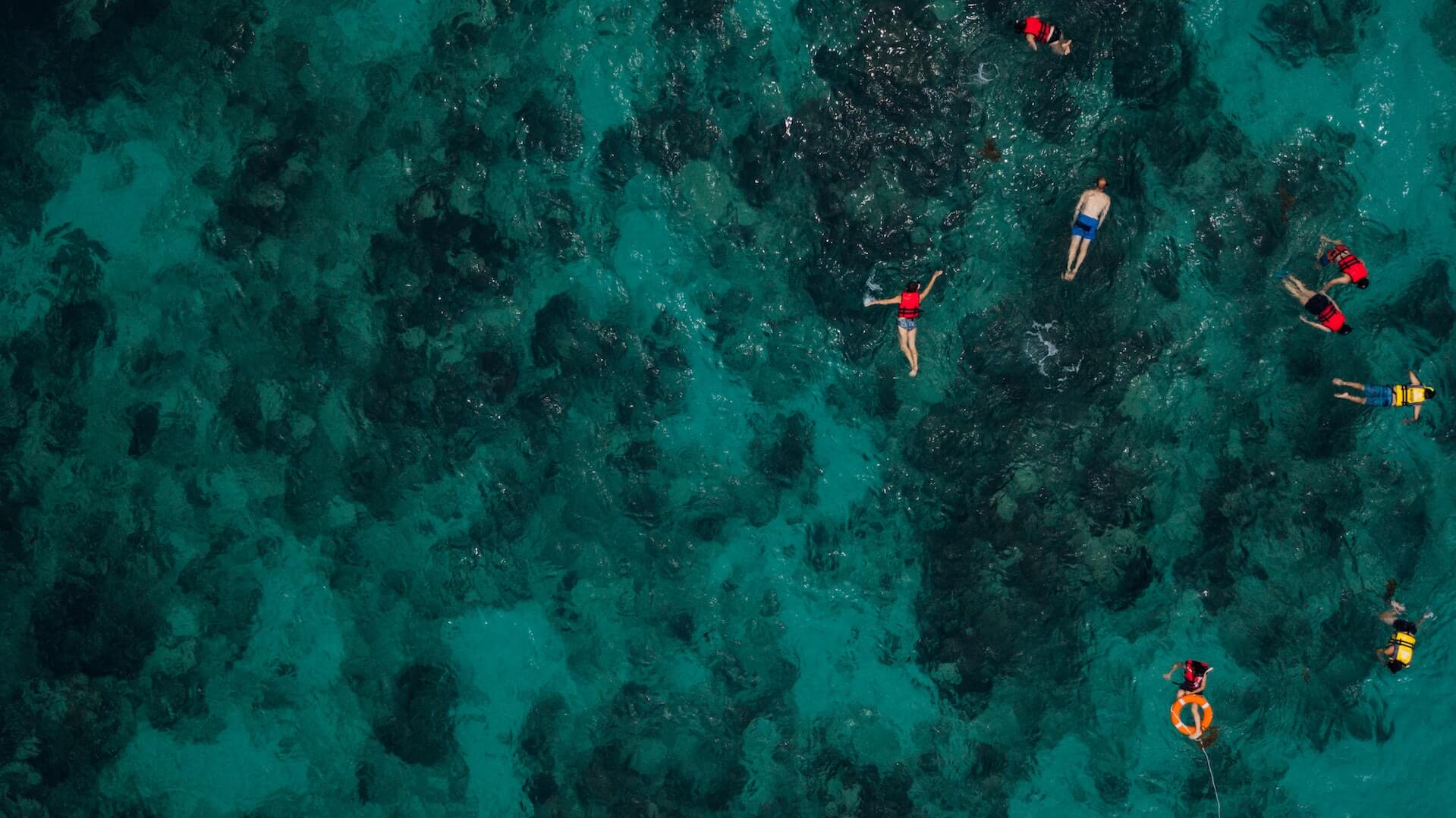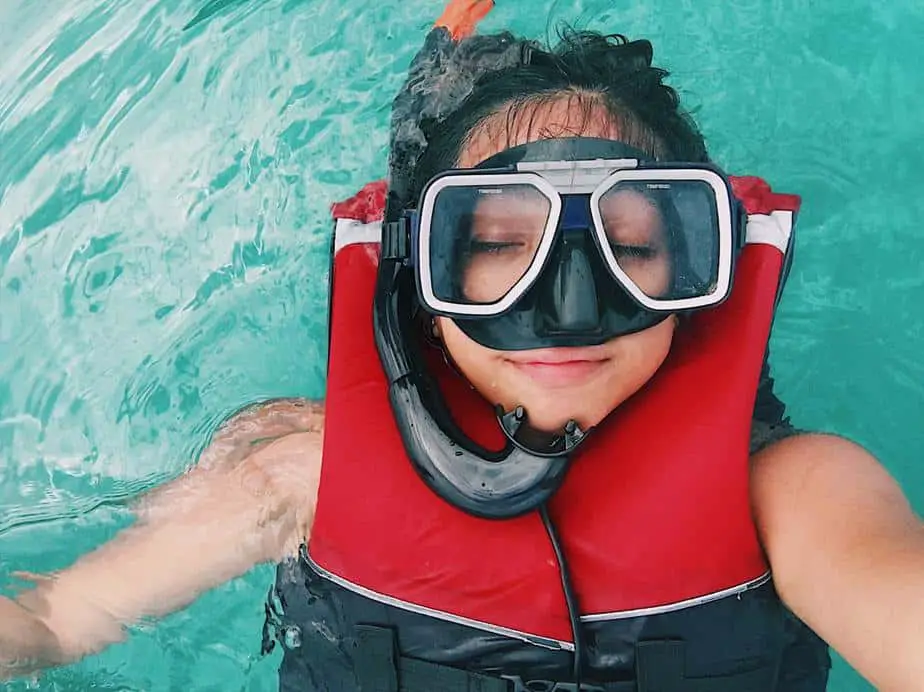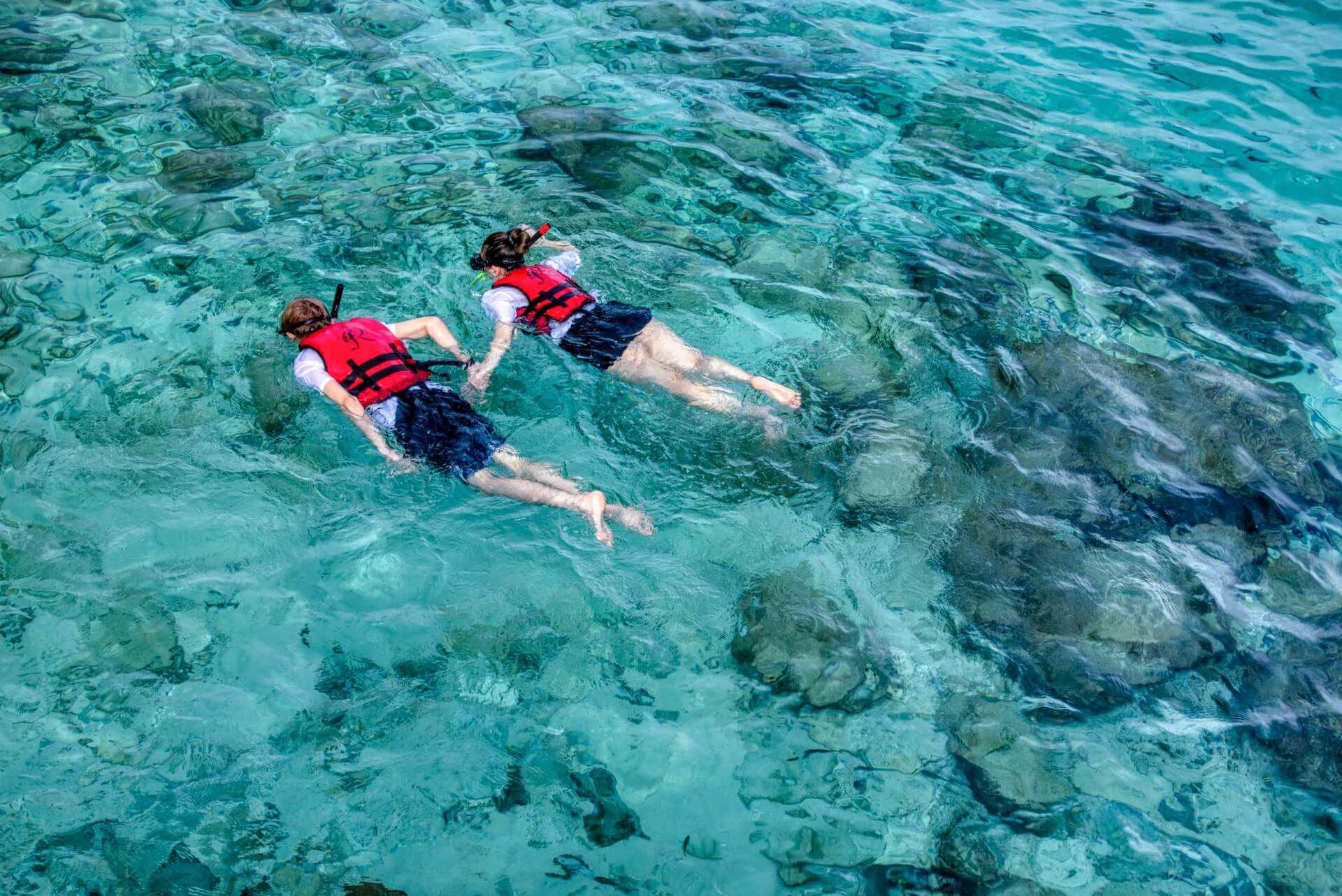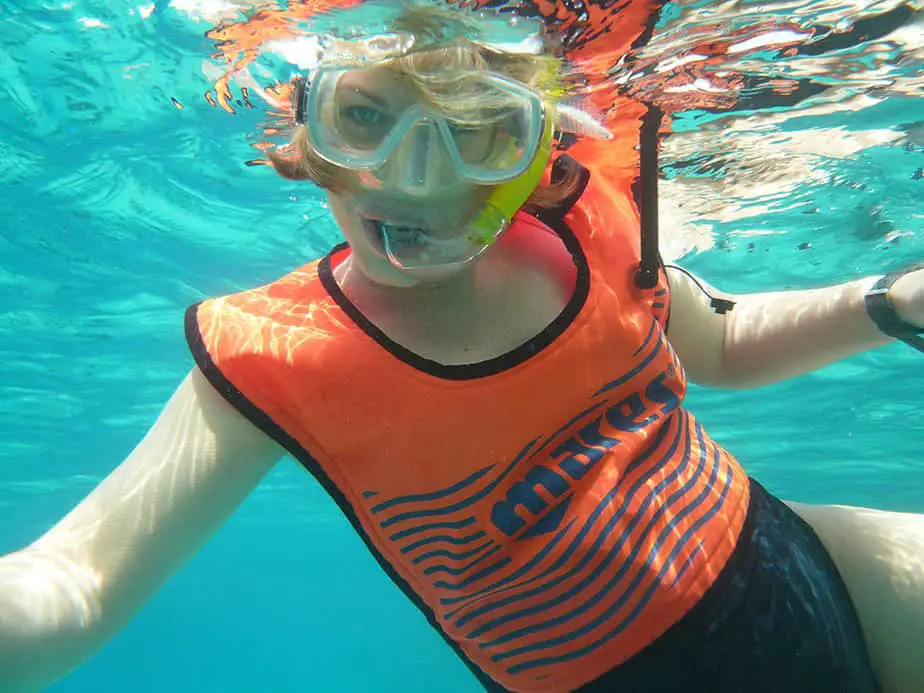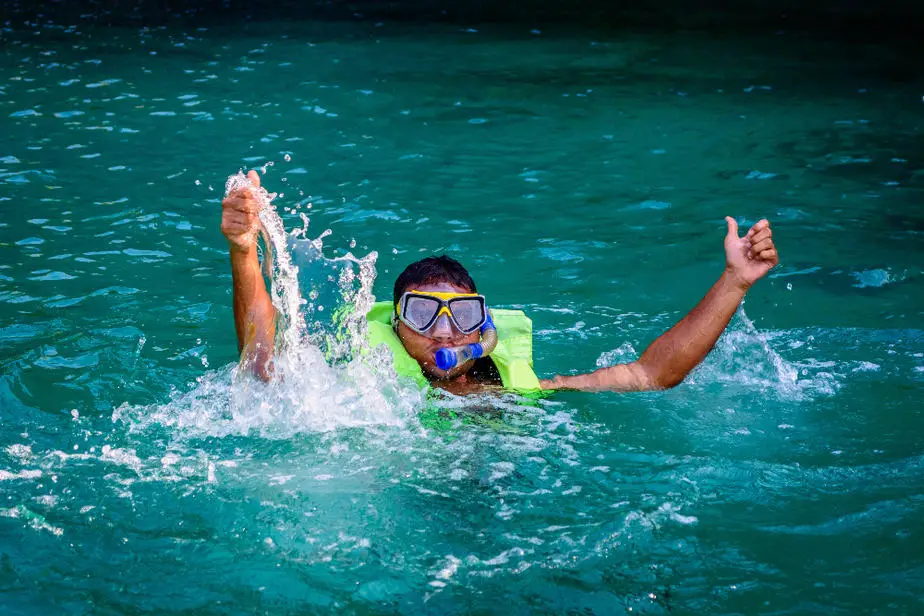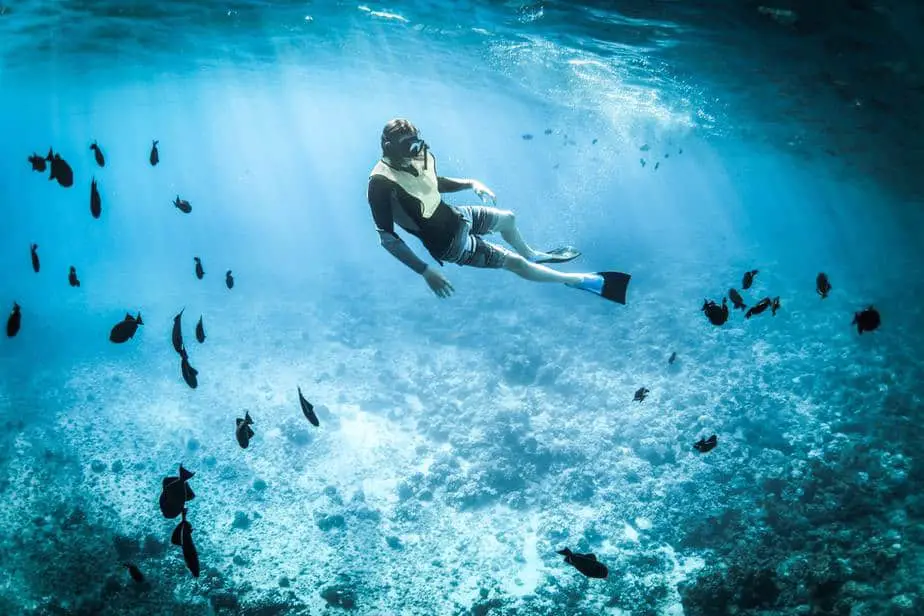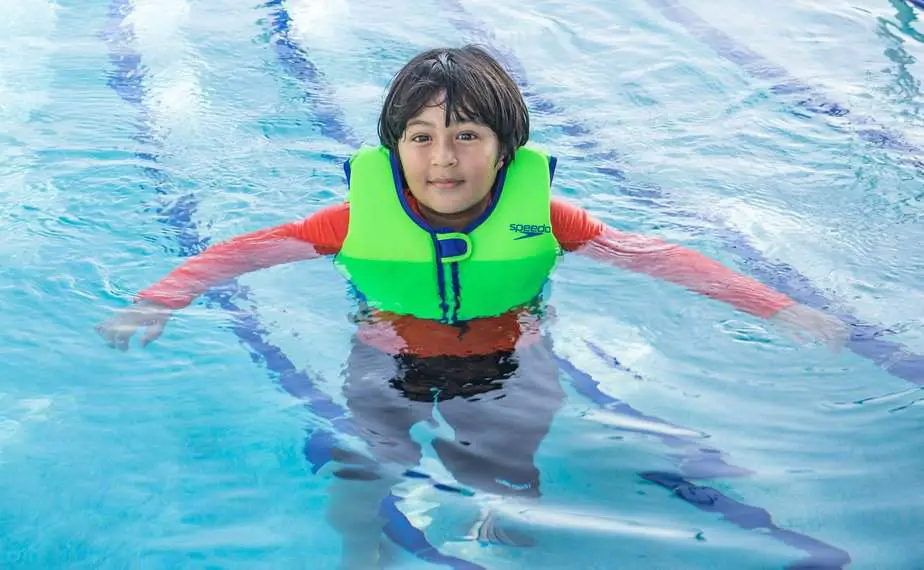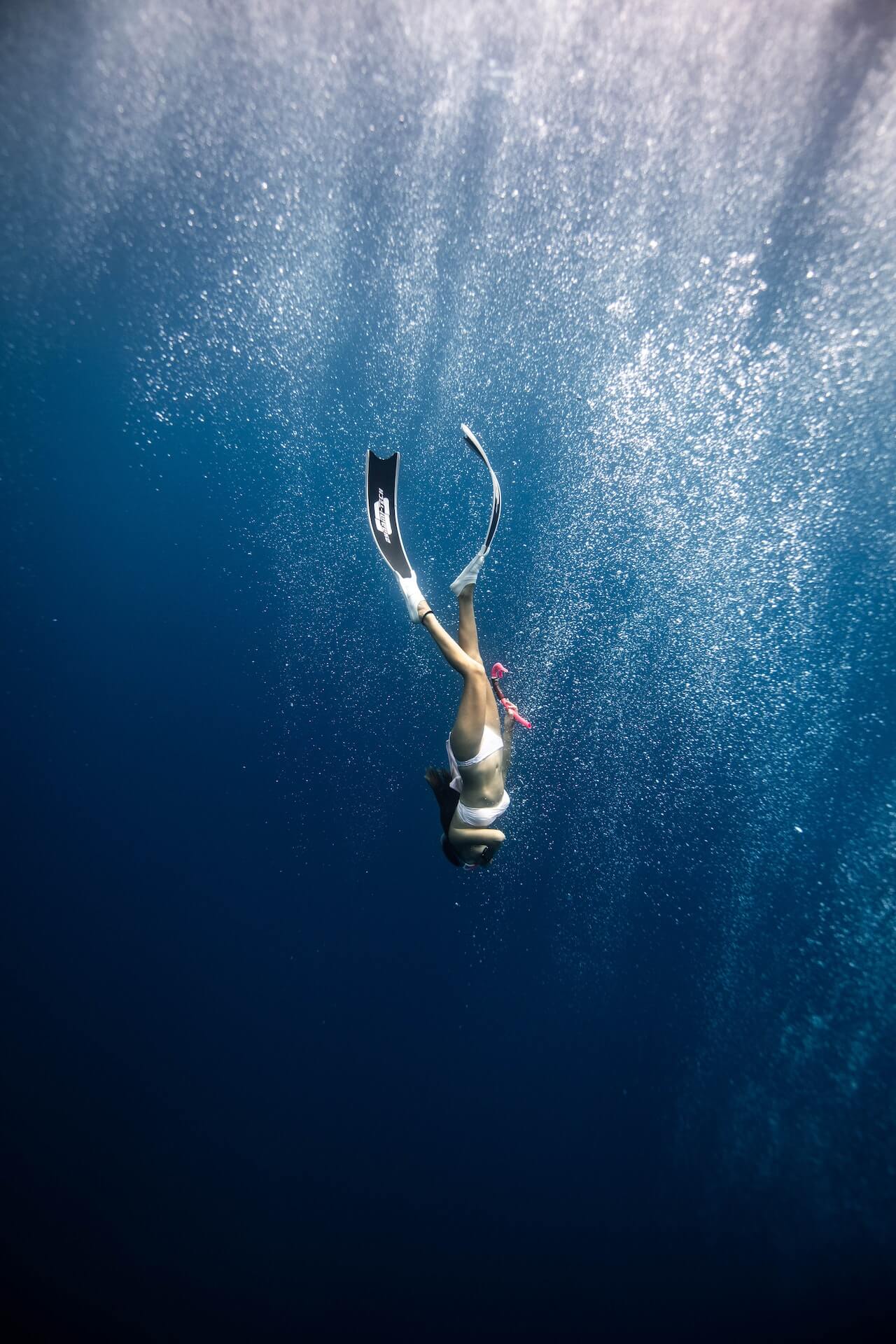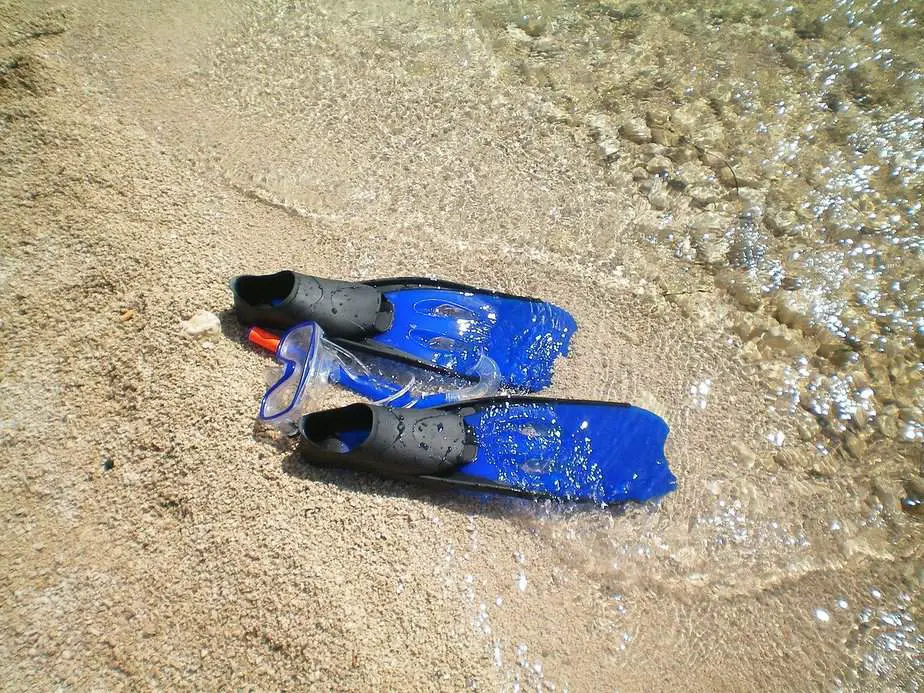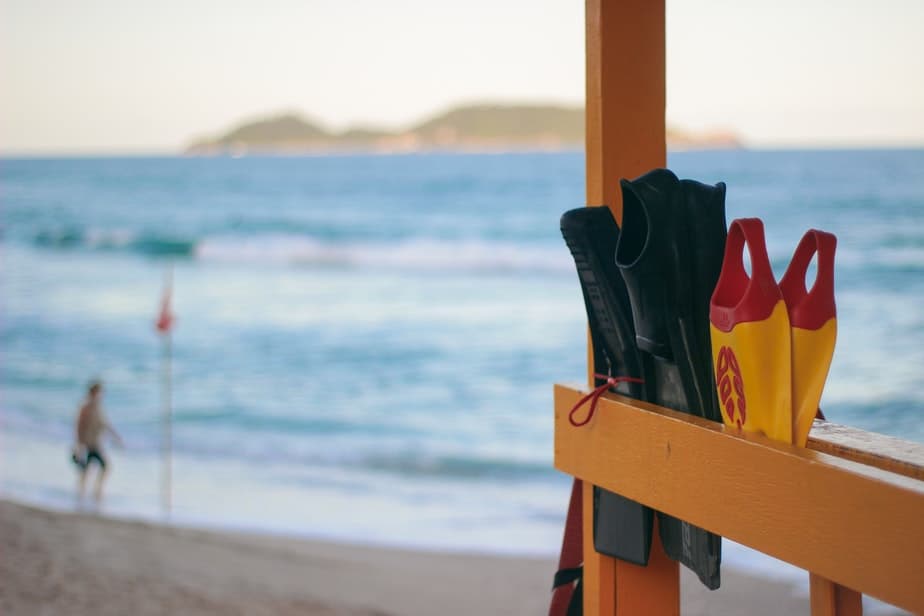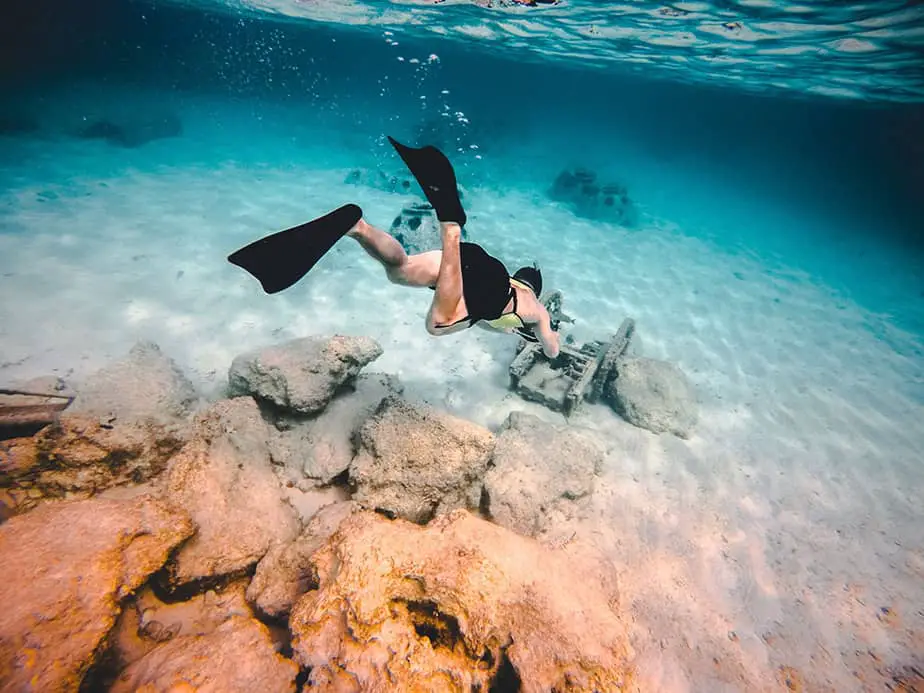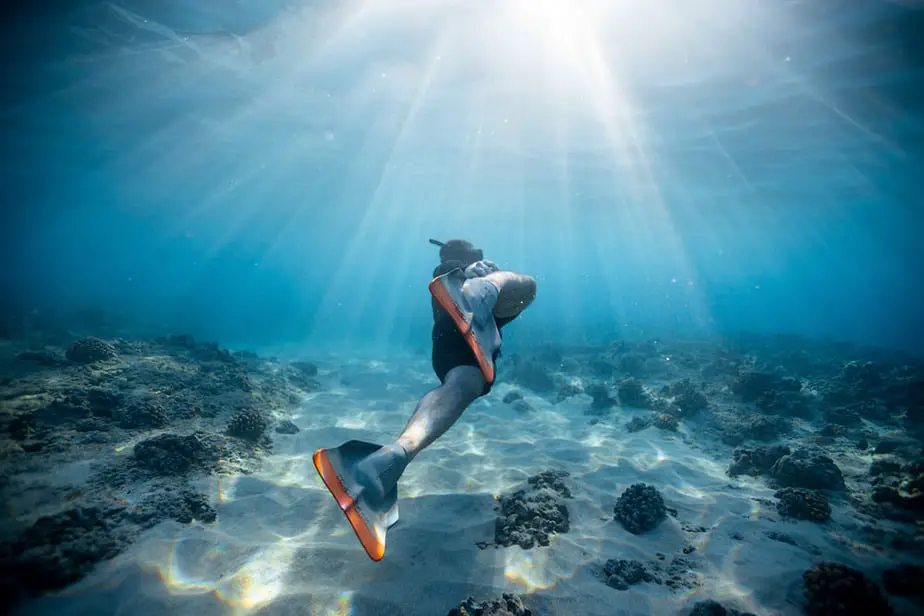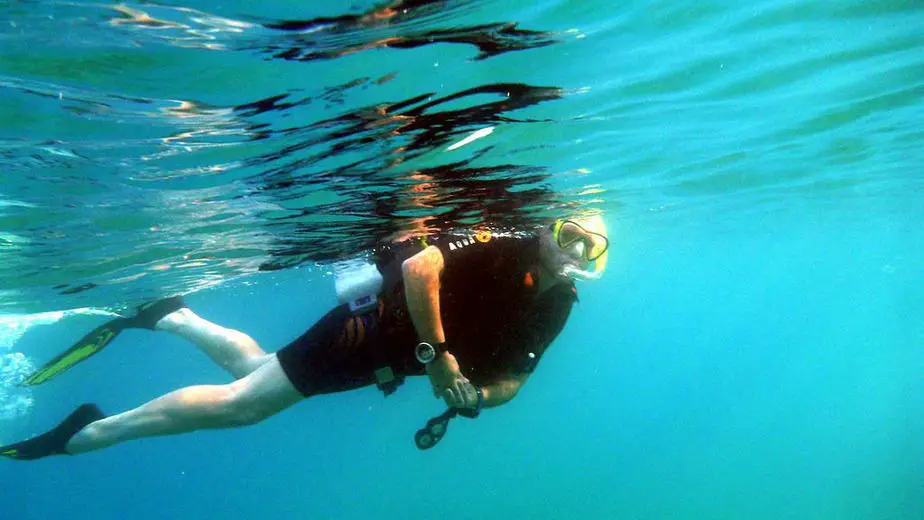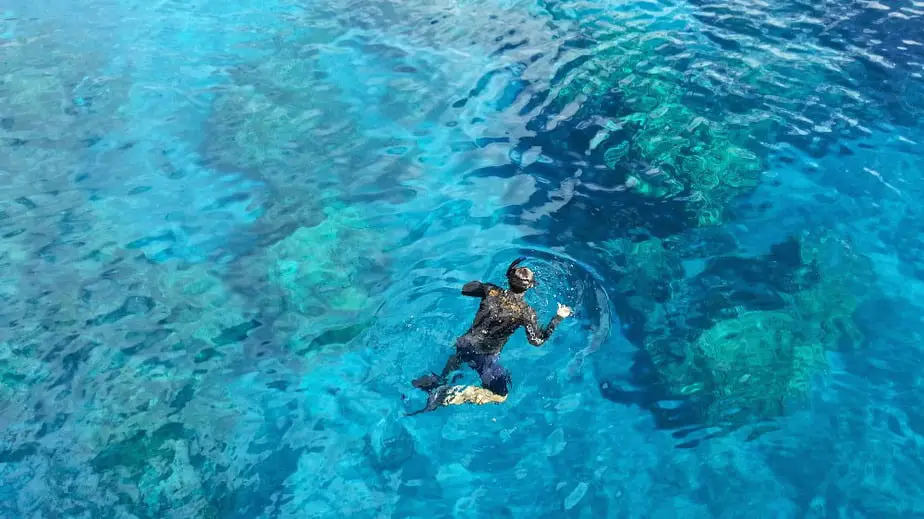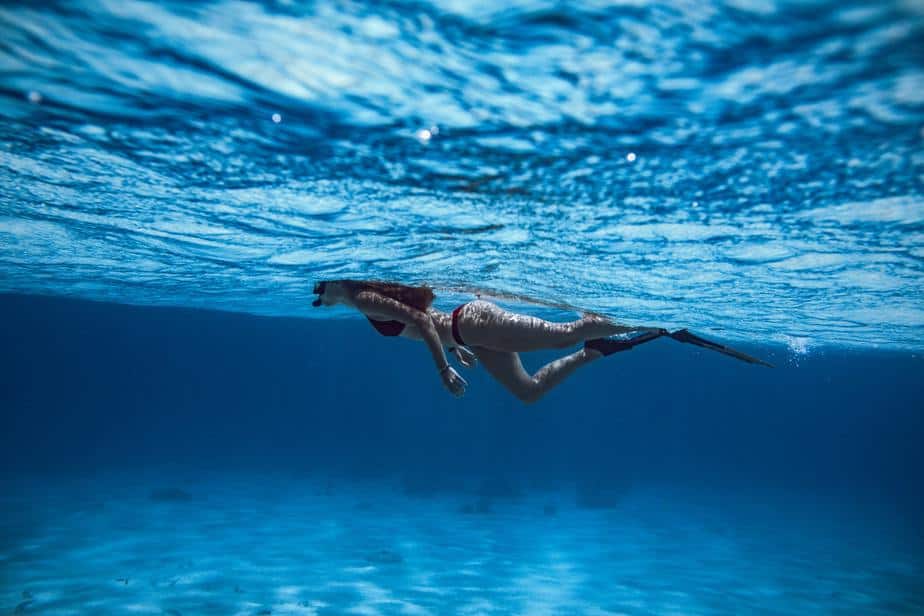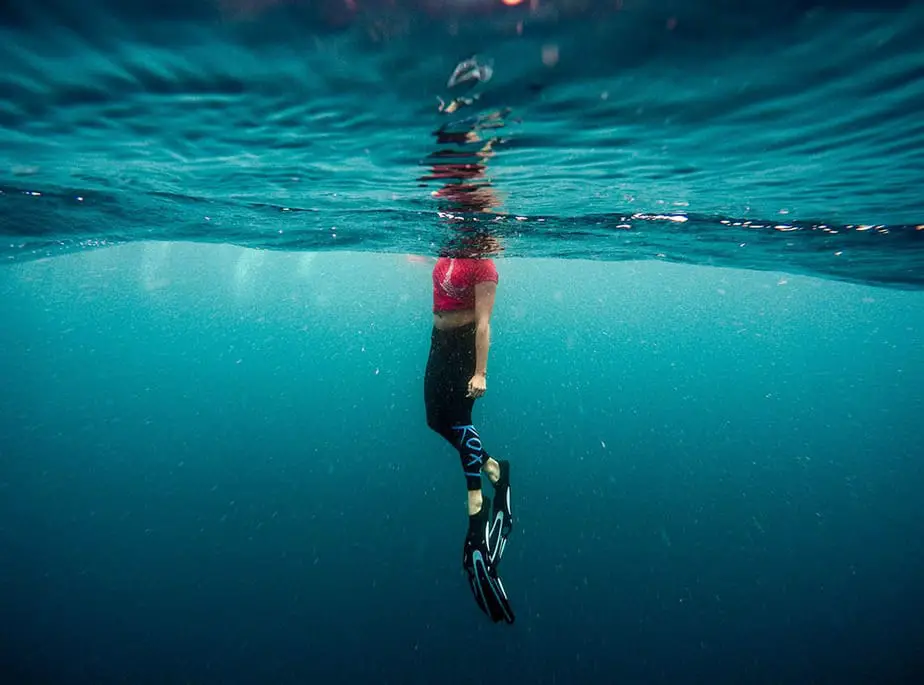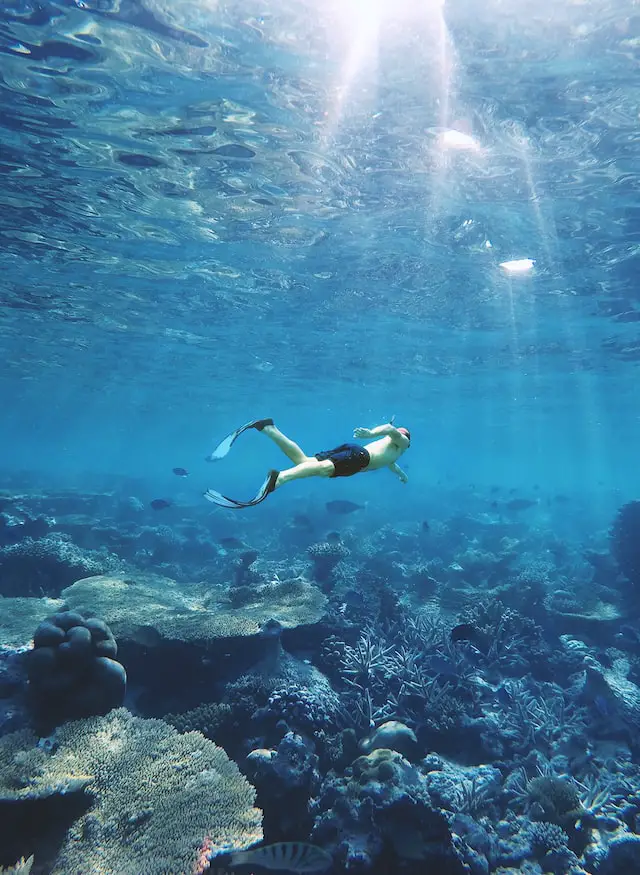If you are thinking about taking up snorkeling and you already own a pair of swim fins, chances are the thought crossed your mind that you can just use swim fins for snorkeling. And you’re not wrong, there’s no rule saying that you can’t. But is it a good idea?
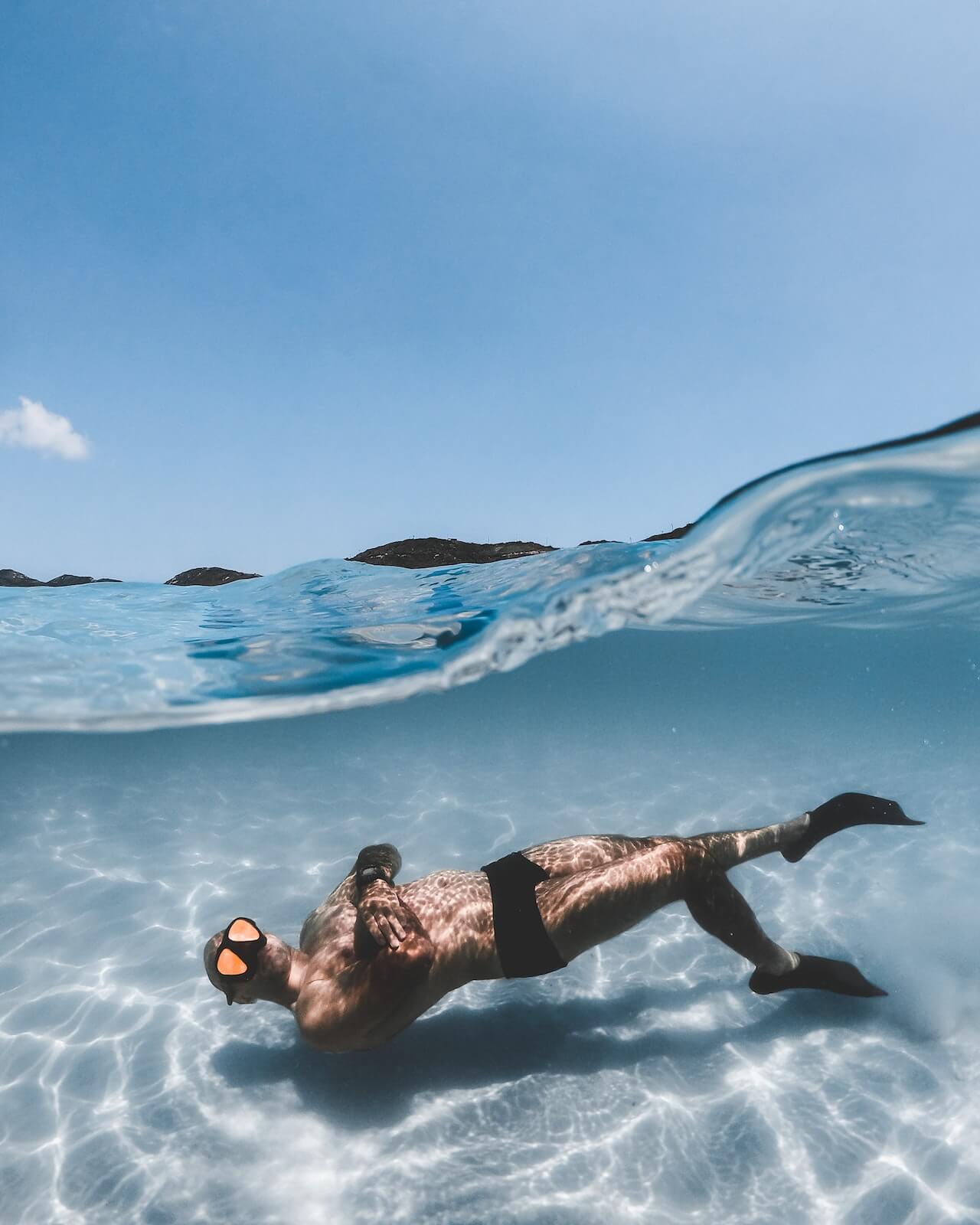
It’s not recommended to use swim fins for snorkeling. Snorkeling fins are longer and more flexible than swim fins. These attributes provide more thrust and control in the water, which is essential for snorkeling. Swim fins do not generate as much thrust, so you may have more difficulty dealing with choppier water conditions.
Keep reading on to better understand why it’s preferable for you to use snorkel fins while snorkeling instead of swim fins.
Swim Fins vs. Snorkeling Fins
Swim Fins
Swim fins, often seen on the feet of competitive swimmers or those training in a pool, serve a distinct purpose. Their primary aim is to increase water resistance, improving a swimmer’s strength and technique. Here’s a breakdown:
- Designed for Training, Resistance, and Propulsion in Pools: These fins are purpose-built for the pool environment. Their structure allows for quick feedback to the swimmer. The resistance they offer means that, over time, a swimmer’s leg muscles become stronger, and their kicking technique becomes more refined.
- Shorter, More Rigid Design: Unlike their longer snorkeling counterparts, swim fins are shorter. This shorter length allows for rapid leg movements, almost resembling a flutter. Because they’re stiffer, they don’t bend easily, which provides instant propulsion, making them perfect for speed drills or sprint training in a controlled environment.
Snorkeling Fins
When you’re exploring the open ocean or even just a local reef, snorkeling fins become your best friends. They are extensions of your feet, designed to let you glide effortlessly through water. Here’s what makes them special:
- Built for Ease of Movement in Open Waters: Snorkeling is about leisurely exploring, not racing. Snorkeling fins are longer, allowing for more significant propulsion with each kick. This means you can travel greater distances in the open water with fewer kicks, conserving energy.
- Longer, Flexible Design: The flexibility of snorkeling fins is key to their effectiveness. As you kick, the fin bends and then snaps back into place, creating a whip-like effect. This motion propels you forward with less effort. Additionally, their length gives you more surface area, which translates to moving more water with each kick, giving you more thrust.
While both swim fins and snorkeling fins are designed for aquatic activities, their specific designs cater to distinct needs. Whether you’re looking to improve your swim speed or discover a coral reef’s hidden gems, understanding the nuances of each fin type will ensure you get the most out of your aquatic adventures.
Pros and Cons: Using Swim Fins for Snorkeling
Diving into the world of snorkeling can be a mesmerizing experience. As you skim the surface of azure waters, discovering the hidden marvels of marine life below can be a real treat. But what if you’re armed with swim fins instead of snorkeling ones? Is the experience just as rewarding? Let’s weigh the advantages and drawbacks.
Advantages
While swim fins aren’t traditionally chosen for snorkeling, they do offer some unique advantages in the right conditions:
- Lightweight and Compact: One of the most notable benefits of swim fins is their small size.
- Easier for Travel: Their compact nature means they’re easier to pack and carry around, making them an attractive option for the occasional snorkeler or someone with limited luggage space.
- Suitable for Snorkeling in Confined Spaces: Exploring narrow underwater passages or caves can sometimes be easier with shorter fins, as they’re less likely to get caught or bumped.
- Rapid Acceleration: The rigidity and short length of swim fins allow for quick bursts of speed. This might come in handy if you’re trying to get away from an area quickly or catch up with a snorkeling group.
- Affordable: On the whole, swim fins tend to be more budget-friendly than specialized snorkeling or diving fins. If you’re just testing the waters and aren’t ready to invest in high-end equipment, swim fins can be an economical entry point.
Disadvantages
However, swim fins aren’t a perfect fit for snorkeling. Here are some of the challenges you might face:
- Reduced Propulsion: The primary drawback is propulsion. Snorkeling fins are designed for traveling longer distances effortlessly. With swim fins, you’ll find yourself kicking more frequently to cover the same distance, which can be tiring over longer periods.
- Potential for Fatigue: Due to the increased frequency of kicks and reduced propulsion, you might tire more quickly than if you were using snorkeling fins. This can limit how far and long you explore, potentially cutting your adventure short.
- Less Maneuverability: Longer snorkeling fins can provide better control in terms of turns and dives. With swim fins, making wider turns or deep dives can be challenging and less fluid. Moreover, in strong currents, you might find yourself working much harder to maintain your position.
Using swim fins for snorkeling can be likened to wearing running shoes for a mountain hike. While they can do the job to some extent, they might not offer the best support and function for the specific activity. That said, understanding both the pros and cons empowers snorkelers to make informed decisions based on their specific needs and conditions.
Tips for Using Swim Fins for Snorkeling
Ensuring Comfort and Fit
A snug fit is crucial for any fin, but it becomes especially important when using swim fins for snorkeling. Here’s how to ensure you’re comfortable throughout your underwater journey:
- Choosing the Right Size: A well-fitted fin is neither too tight nor too loose. It should feel like an extension of your foot.
- Measuring Your Foot: Before purchasing, measure your foot and compare it to the brand’s size chart. Remember, sizes can vary across brands. Alternatively, a good starting point is to simply choose the same fin size as your shoe size, or a size smaller for women.
- Trying Before Buying: If possible, try the fins on, preferably with any other gear you’ll be wearing, like neoprene socks.
- Using Fin Socks or Booties: Even the best-fitted fin can cause discomfort during prolonged use. To prevent that, you can wear socks or booties. Fin socks can reduce friction between your foot and the fin, decreasing the risk of blisters, as well as provide a layer of insulation.
Maximizing Your Kick Efficiency
Swim fins are not naturally designed for the long, leisurely kicks of snorkeling. However, with some adjustments, you can make them work for you:
- Adjusting Kick Technique: While the short and fast flutter kicks work great in pools, snorkeling requires a more elongated and relaxed kick. Think of it more as a graceful undulating motion, using your hips as the primary driver.
- Staying Horizontal: A horizontal posture helps in reducing drag. Use your arms for balance and ensure your head is in a neutral position, looking forward and slightly down.
- Avoiding Cramps: Extended fin use, especially when not accustomed to the equipment, can lead to foot and calf cramps. Drink plenty of water before and after snorkeling. Stretch your calves, hamstrings, and foot arches to ensure flexibility and reduce the risk of cramping.
Safety Considerations
When venturing out into the open waters with swim fins, safety should always be the primary concern:
- Being Aware of Currents: Swim fins offer less surface area, which can make it challenging to swim against strong currents.
- Researching the Snorkeling Spot: Get to know the typical water conditions of where you’re snorkeling. Speak to locals or guides about potential currents.
- Staying Close to Shore: Especially if you’re new to using swim fins for snorkeling, it’s wise to stay relatively close to the shore.
- Buddy System: Whether you’re an experienced snorkeler or a newbie, always snorkel with a partner.
- Maintaining Visual Contact: Ensure you can always see your buddy and establish hand signals for communication.
- Choosing Compatible Partners: It’s best if your snorkeling buddy uses similar equipment. If one has snorkeling fins and the other swim fins, it might be challenging to keep pace.
Using swim fins for snorkeling can be an enriching experience if done right. By focusing on comfort, optimizing your kick technique, and adhering to safety precautions, you can enjoy the best of both worlds.
Sources:

